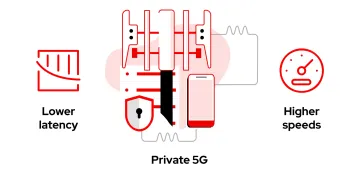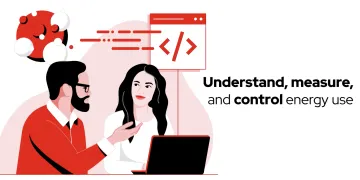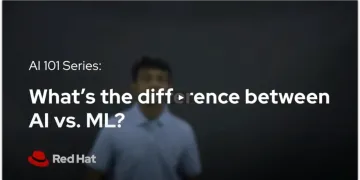Sobre este vídeo
Burr Sutter and Clayton Coleman of Red Hat discuss containers, Kubernetes and hybrid cloud in episode 2 of Red Hat's Technically Speaking.
- Tempo de execução
- 4:07
- Data
Transcrição
[Burr] I'm excited to be talking with Clayton Coleman. Clayton is the lead contributor of Kubernetes and one of the lead architects here at Red Hat. How does Linux containers, how has that evolved and impacted this concept of the cloud movement? People have taken their workloads from on-premise data centers and moving them in to different cloud providers.
[Clayton] It's kinda interesting. So, there's the classic way of thinking about it. It's like we have all this infrastructure and so, people think of ways to use it. So, we had machines, people ran software on there. We had VMs, and VMs were just better machines. I think containers are actually the first part. Maybe the first place where we started to flip from being focused on the infrastructure, like ops teams were making all these decisions for you and you weren't really involved.
[Burr] It used to be they would throw it over the wall to the operations team. They would then create a virtual machine image, in many cases, with the application payload and whatever they wanted to configure the operating system level. And that, of course, was rife with possible errors. Human errors. We have solutions for that like ansible, ansible playbooks. But, it was still a challenge. It was still the hand-off, if you will. And with Linux containers, now it's on the dev side and they can actually be more responsible for that stack.
[Clayton] We know we're trying to make software easier for developers to consume and as this role shift is happening where more and more people are taking ownership of their software all the way to where end users access it, Linux containers really helped provide that fundamental building block. And then that explosion that we saw with public cloud really tied in to that as well, so there's all these places that you can run Linux software.
[Burr] Developer productivity is greatly impacted by the Linux container. They can now bundle up that software with all the right dependencies inside it and move it from place to place as it needs to go. And more importantly, they've codified their infrastructure, if you will - right? Within, they have files that they can check in the storage control and basically just tell you how to build a stack of the software that they need it to run on.
[Clayton] Right. And, a lot of these practices that are so fundamental to modern software, they're not new but it's how easy they are for everyone to apply them.
[Burr] I just ran my script and then installed across all of them cause it was the same API nav. The same user experience, both at the console level and the CLI. OC new app or Q, control, deploy. I applied dash f, deployment gammel. All that worked beautifully. Kubernetes and Open Shift are synonymous with the hybrid cloud. And when people think multi cloud, hybrid cloud, how do I wanna stretch my application from this data center to that data center to this cloud to that cloud, Kubernetes is now the entire story that seems to be the way that people are going to do that going forward.
[Clayton] They're doing it by providing value. And that is the best possible outcome of any technology. Is, it makes you more successful. And you have the choice of how deeply you buy in to that. Some of what we've seen is as the software choices change, you're probably not always gonna stay on one public cloud. And so when we can make choices that enable others to become more successful, to move their applications, to have portability, to be able to get some of the capabilities on the cloud on-premise, to be able to build on top of a foundation that's the same everywhere, those benefit end users. And so for us, Red Hat, and Open Shift, and Kubernetes, it's how do we build tools and technologies that make it easier for people to just keep moving forward? For every new application written on the cloud, there's a thousand applications sitting in someone's data center that could benefit from rolling updates or the ability to consolidate their footprint. Or, the ability to roll out a critical security patch every week. Most people have to get in the mindset anyway is, there's, nothing's perfect. Need that flexibility to be able to run anywhere but you also need the flexibility to be able to update anything. And Red Hat's uniquely positioned at someone who both helps build the infrastructure software, helps provide the platform, and helps provide a lot of those software packages that people depend on, and Red Hat'll be there for customers.
[Burr] Well, Clayton, thank you so much for today. I'm excited about the future of Kubernetes and Linux container, and Open Shift, and what it means to our customers. And, so, thank you so much for that conversation.



